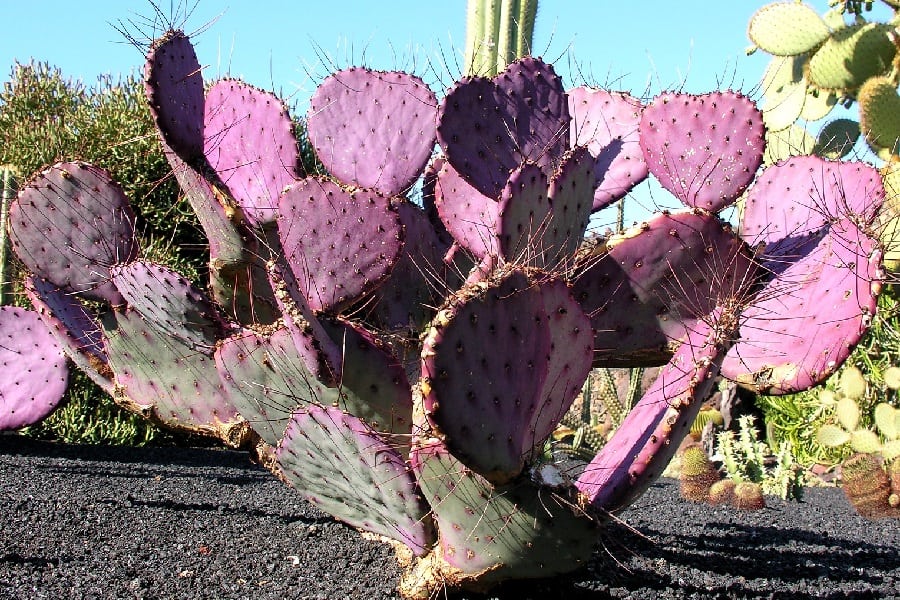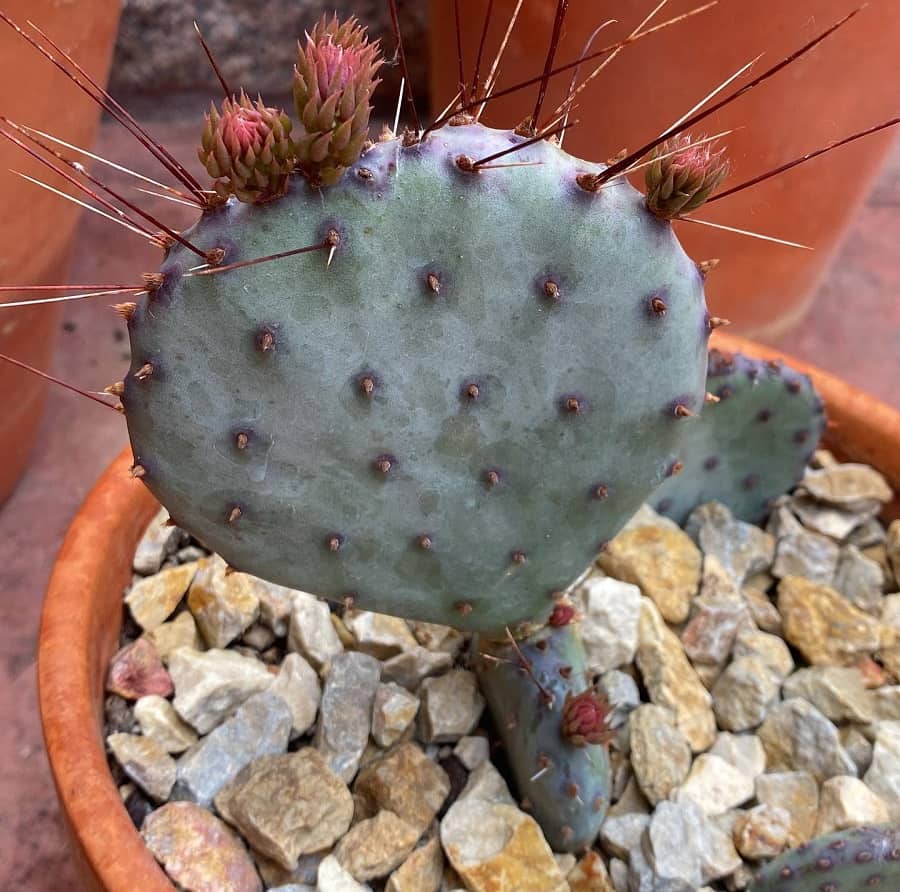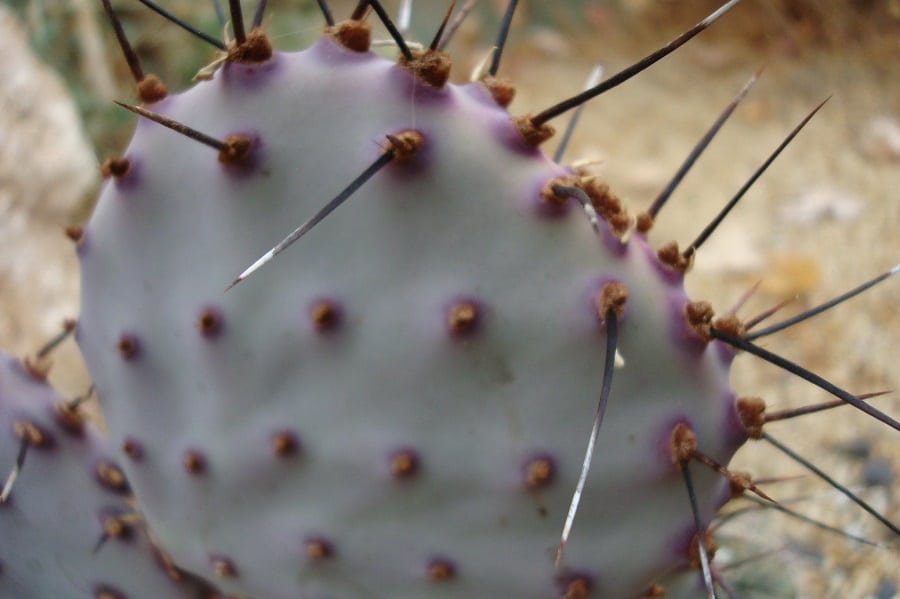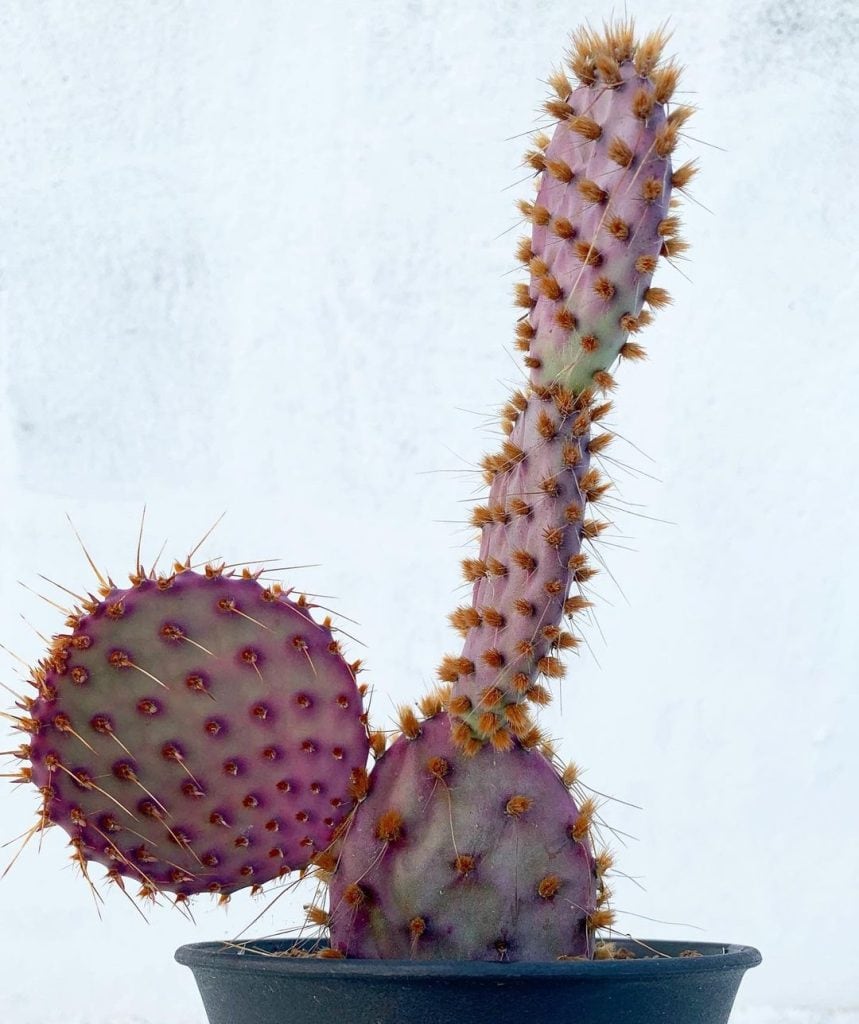Opuntia violacea: The Vibrant Purple Cactus of the Southwest
If you find yourself wandering the arid landscapes of the American Southwest, you might stumble upon a striking sight – a cactus adorned in vibrant shades of purple. This desert dweller, defying expectations with its unusual hue, is the captivating Opuntia violacea. Boasting long spines and producing bursts of yellow and red flowers, this resilient prickly pear has captured hearts with its unique charm and ability to thrive in harsh conditions. Let’s dive into the world of this enchanting purple cactus and unravel the secrets to cultivating it successfully.

Contents
About Opuntia violacea
Native to Texas, Arizona, and parts of Mexico, Opuntia violacea is a true desert dweller. Also known as the “violet prickly pear” and “Santa Rita cactus”, this low-growing cactus boasts circular stems that range from gray-green to a stunning purple-pink. But that’s not all – it also flaunts long spines and blooms forth yellow and red flowers, adding to its allure. Once fully mature, this remarkable cactus can reach up to 5 feet in height, making it a striking addition to any landscape.
Intrigued? Read on to discover how to cultivate and care for this vibrant beauty!
Related Post:
195 Opuntia Varieties [With Pictures]
How to Care for Opuntia violacea
Light Requirements
As a true sun-worshipper, Opuntia violacea thrives in bright, direct sunlight. To replicate its natural habitat, place your cactus in an open, sunny spot like an exposed garden or balcony. During the scorching summer months, provide some afternoon shade to prevent damage from extreme heat. If you’re growing indoors, supplement with a grow light to ensure your violet prickly pear receives the sunlight it craves.
Watering Needs
Like most cacti, Opuntia violacea is drought-tolerant and prefers infrequent watering. During the spring, summer, and fall (its growing seasons), water it thoroughly once or twice a week, allowing the soil to dry slightly between waterings. In the winter months, reduce watering to once a week or just enough to prevent the soil from completely drying out. Avoid splashing water on the stems, as this can lead to rotting.

Soil Preferences
This cactus loves well-draining, gritty soil. A perfect mix includes 20% coco coir or peat moss, 60% vermiculite (for aeration), and 20% sandy soil. You can also add a small amount of organic potting soil for added nutrients. Choose a soil mix that promotes excellent drainage and air circulation, as Opuntia violacea roots are prone to rot in soggy conditions.
Fertilizing Tips
During the growing seasons (spring, summer, and fall), feed your cactus with a balanced liquid fertilizer once a month. Avoid fertilizing in winter when growth slows down. For an extra boost, incorporate a slow-release fertilizer into the soil when repotting in spring or fall. Opt for phosphorus-potassium fertilizers before and after blooming, and nitrogen-rich formulas during the seedling stage.
Temperature and Humidity
True to its desert origins, Opuntia violacea thrives in warm temperatures ranging from 68°F to 95°F (20°C to 35°C). Avoid exposing it to temperatures below 50°F (10°C) or above 95°F (35°C), as this can slow growth and induce dormancy. Ensure good air circulation and low humidity to prevent water accumulation, which can lead to rot.

Pests and Problems
While generally hardy, Opuntia violacea can face a few challenges. Keep an eye out for anthracnose (black spiral patterns caused by high humidity), stem rot (due to insects, cold injuries, or infected soil), root-knot nematodes, spider mites, and aphids. Proper care and a watchful eye can help prevent or manage these issues.
Pruning
Pruning requirements for Opuntia violacea are minimal. Simply remove any dead or withered branches and spent flowers to maintain the plant’s health and appearance.
Potting and Repotting
When potting Opuntia violacea, use well-draining clay pots of an appropriate size to allow for proper root development. Repot annually in spring or fall, gently removing the old soil and replanting in a fresh, well-draining cactus mix. Choose a slightly larger container to accommodate growth.
How to Propagate Opuntia violacea

Propagating Opuntia violacea is a breeze! Here’s how you can multiply your violet prickly pear collection:
- Division: Cut off lateral branches or the plant’s tip, and plant them in soil. Within a few months, you’ll see new shoots emerging.
- Grafting: Secure the rootless Opuntia violacea cutting onto a suitable rootstock, binding them together. Once they fuse, remove the binding.
- Seeding: Sow seeds in a humid environment, covering the soil with plastic until germination occurs.
With its eye-catching purple hues and easy-going nature, Opuntia violacea is a must-have for any cactus enthusiast or desert plant lover. Embrace the vibrant beauty of this Southwest stunner and let it add a pop of color to your outdoor (or indoor) oasis!
